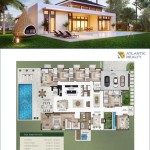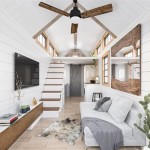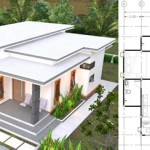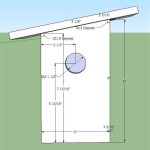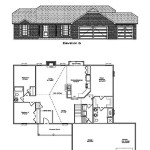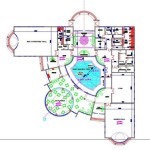What Is The Floor Plan Of The White House?
The White House, located at 1600 Pennsylvania Avenue in Washington, D.C., serves as the primary workplace and official residence of the President of the United States. Understanding its floor plan is key to appreciating its functionality, historical significance, and the complex network of operations that occur within its walls. The building's layout reflects the evolving needs of the presidency over centuries, incorporating both public and private spaces designed to support the functions of the executive branch and the personal life of the First Family.
The White House is not a single structure, but rather a complex comprised of the Executive Residence, the West Wing, and the East Wing. Each section serves distinct purposes, contributing to the overall operation of the presidency. The Executive Residence houses the First Family’s private quarters and is also used for ceremonial events and formal receptions. The West Wing contains the President’s office, the offices of key advisors, and the Cabinet Room. The East Wing primarily houses offices for the First Lady and her staff, as well as spaces for social and ceremonial events.
The original White House, designed by Irish architect James Hoban, was constructed between 1792 and 1800. The building has undergone several significant renovations and expansions throughout its history. Thomas Jefferson added east and west terraces. During Theodore Roosevelt's presidency, the West Wing was constructed to separate the President's work from the family's living quarters. The East Wing was added later, during Franklin D. Roosevelt’s administration. These modifications reflect the growing demands placed on the executive branch and the ever-changing role of the First Family.
Key Point 1: The Executive Residence Floor Plan
The Executive Residence, the central block of the White House, is composed of six floors: the Ground Floor, the State Floor, the Second Floor, the Third Floor, and two sub-basement levels. Each floor has a specific purpose and distinct features. Understanding the layout of each level provides insight into the diverse functions of the White House.
The Ground Floor houses several important rooms, including the Diplomatic Reception Room, the Map Room, the China Room, and the Vermeil Room. The Diplomatic Reception Room is often used for receiving foreign dignitaries and ambassadors. The walls are covered with scenic wallpaper depicting early American landscapes. The Map Room, historically used for strategic planning during World War II, is now used for small meetings and television interviews. The China Room contains a collection of presidential china, showcasing the different styles and designs used by previous administrations. The Vermeil Room displays a collection of gilded silver pieces, many of which were donated by Margaret Thompson Biddle.
The State Floor is the most publicly accessible part of the Executive Residence and contains some of the most iconic rooms in the White House. This floor includes the East Room, the Green Room, the Blue Room, the Red Room, and the State Dining Room. The East Room is the largest room in the White House and is used for large receptions, ceremonies, and press conferences. The Green Room, furnished in a Federal style, is often used for smaller receptions and meetings. The Blue Room is an oval-shaped room used for receiving guests and is traditionally decorated in blue and gold. The Red Room, furnished in a more formal Empire style, is used for small receptions and teas. The State Dining Room is used for formal dinners and state banquets and can accommodate around 140 guests. Portraits of past presidents adorn the walls of these rooms, adding to the historical significance of the space.
The Second Floor serves as the primary living quarters for the First Family. This floor includes the President’s Bedroom, the First Lady’s Bedroom, the Lincoln Bedroom, the Queen’s Bedroom, the Treaty Room, and the Yellow Oval Room. The President’s Bedroom is a private space for the President. The First Lady’s Bedroom is adjacent to the President’s Bedroom. The Lincoln Bedroom, often misunderstood as where Abraham Lincoln slept, was actually used as his office and Cabinet Room. The Queen’s Bedroom is used for visiting dignitaries and guests of the First Family. The Treaty Room, used as a sitting room, has served various purposes throughout the White House’s history. The Yellow Oval Room, located directly above the Blue Room, is a drawing room used for smaller gatherings and informal meetings.
The Third Floor, located directly above the Second Floor, contains additional living space and guest rooms. This floor is less publicly known but still serves important functions for the First Family and their guests. The floor has undergone renovations to accommodate the needs of different presidential families over time. Details about the specific rooms on this floor are generally less publicized to maintain the privacy of the First Family.
Key Point 2: The West Wing Floor Plan
The West Wing is the working heart of the White House, housing the offices of the President and key members of his staff. Its layout is designed for efficiency and to facilitate the smooth operation of the executive branch. Key rooms in the West Wing include the Oval Office, the Cabinet Room, the Situation Room, and the Press Briefing Room.
The Oval Office, the President’s primary workspace, is perhaps the most recognizable room in the White House. Its oval shape allows for a more inclusive meeting environment. The design of the Oval Office is personalized by each President, reflecting their individual tastes and priorities. The Resolute Desk, often used by Presidents, has a long history and adds to the room's historical significance. Windows provide natural light and views of the Rose Garden.
The Cabinet Room is where the President holds meetings with his Cabinet secretaries and other important advisors. The room features a large table surrounded by chairs, with each seat designated for a specific Cabinet member. Portraits of past presidents hang on the walls, reminding those present of the history and responsibilities of their positions. The Cabinet Room is a space where important policy decisions are discussed and debated.
The Situation Room, officially known as the John F. Kennedy Conference Room, is a secure conference room used for monitoring and managing crises and sensitive information. This room is staffed 24/7 and equipped with advanced communication and technology. It allows the President and his advisors to receive real-time updates and make informed decisions during critical events. The Situation Room is designed to be a secure and confidential space.
The Press Briefing Room, also known as the James S. Brady Press Briefing Room, is where the White House Press Secretary conducts daily briefings for the media. This room is designed to accommodate a large number of journalists and is equipped with cameras and microphones. The Press Briefing Room is a critical interface between the White House and the public, providing information about the administration's policies and actions.
Key Point 3: The East Wing Floor Plan
The East Wing houses the offices of the First Lady and her staff, as well as spaces for social and ceremonial events. This wing is less well-known than the West Wing but plays an essential role in the White House’s operations. Key rooms in the East Wing include the First Lady’s Office, the Social Office, and the Visitors’ Foyer.
The First Lady's Office is where the First Lady and her staff conduct their work, focusing on initiatives and projects that she champions. The First Lady plays an increasingly important role in public life, and her office supports her efforts to promote social causes and engage with communities across the country. The East Wing's layout reflects the evolving role of the First Lady in American society.
The Social Office is responsible for planning and organizing social events at the White House. This office manages everything from state dinners to holiday celebrations, ensuring that these events run smoothly and reflect the President's and First Lady's hospitality. The Social Office plays a key role in maintaining the White House's image and promoting goodwill with guests from around the world.
The Visitors’ Foyer is the main entrance for guests visiting the East Wing. This space is carefully designed to make a positive first impression and provides a welcoming atmosphere for visitors. The Visitors’ Foyer is often decorated with artwork and historical artifacts, showcasing the White House’s history and cultural significance.
In conclusion, the floor plan of the White House is a complex and multifaceted reflection of its history, function, and evolving role in American society. From the formal State Rooms of the Executive Residence to the operational hubs of the West and East Wings, each space serves a distinct purpose. Understanding the layout of the White House provides a deeper appreciation for the building’s significance and the intricate workings of the United States presidency.

The White House Archisyllogy

White House Data Photos Plans Wikiarquitectura

First Floor White House Museum

3d White House Cutaways Did You Know The Oval Office Is Not Actually Inside Main Building Core77

Mr Lincoln S White House

First Floor White House Museum

Historical Tour Of The White House
File White House State Floor Svg Wikipedia

File White House West Wing Floorplan1 Svg Wikipedia

First Floor White House Museum

